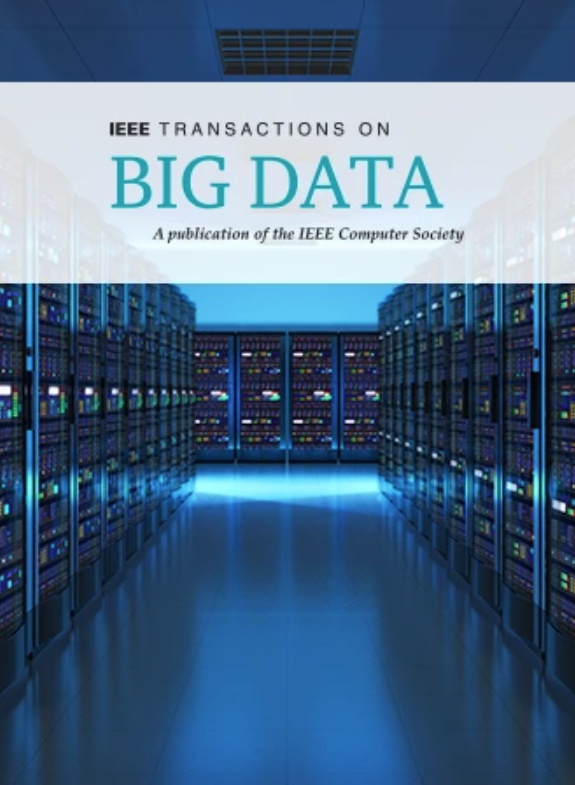Hierarchical Multi-Relational Graph Representation Learning for Large-Scale Prediction of Drug-Drug Interactions
IF 5.7
3区 计算机科学
Q1 COMPUTER SCIENCE, INFORMATION SYSTEMS
引用次数: 0
Abstract
Most existing methods for predicting drug-drug interactions (DDI) predominantly concentrate on capturing the explicit relationships among drugs, overlooking the valuable implicit correlations present between drug pairs (DPs), which leads to weak predictions. To address this issue, this paper introduces a hierarchical multi-relational graph representation learning (HMGRL) approach. Within the framework of HMGRL, we leverage a wealth of drug-related heterogeneous data sources to construct heterogeneous graphs, where nodes represent drugs and edges denote clear and various associations. The relational graph convolutional network (RGCN) is employed to capture diverse explicit relationships between drugs from these heterogeneous graphs. Additionally, a multi-view differentiable spectral clustering (MVDSC) module is developed to capture multiple valuable implicit correlations between DPs. Within the MVDSC, we utilize multiple DP features to construct graphs, where nodes represent DPs and edges denote different implicit correlations. Subsequently, multiple DP representations are generated through graph cutting, each emphasizing distinct implicit correlations. The graph-cutting strategy enables our HMGRL to identify strongly connected communities of graphs, thereby reducing the fusion of irrelevant features. By combining every representation view of a DP, we create high-level DP representations for predicting DDIs. Two genuine datasets spanning three distinct tasks are adopted to gauge the efficacy of our HMGRL. Experimental outcomes unequivocally indicate that HMGRL surpasses several leading-edge methods in performance.层次多关系图表示学习用于药物-药物相互作用的大规模预测
大多数现有的预测药物-药物相互作用(DDI)的方法主要集中在捕获药物之间的显式关系,而忽略了药物对(DPs)之间存在的有价值的隐含相关性,这导致预测薄弱。为了解决这个问题,本文引入了一种分层多关系图表示学习(HMGRL)方法。在HMGRL的框架内,我们利用大量与药物相关的异构数据源构建异构图,其中节点代表药物,边缘表示清晰而多样的关联。使用关系图卷积网络(RGCN)从这些异构图中捕获药物之间的各种显式关系。此外,开发了一个多视图可微光谱聚类(MVDSC)模块,以捕获DPs之间多个有价值的隐含相关性。在MVDSC中,我们利用多个DP特征来构建图,其中节点表示DP,边表示不同的隐式相关性。随后,通过图切割生成多个DP表示,每个表示都强调不同的隐式相关性。图切割策略使我们的HMGRL能够识别强连接的图社区,从而减少不相关特征的融合。通过组合DP的每个表示视图,我们创建用于预测ddi的高级DP表示。我们采用了跨越三个不同任务的两个真实数据集来衡量我们的HMGRL的有效性。实验结果明确表明,HMGRL在性能上超过了几种领先的方法。
本文章由计算机程序翻译,如有差异,请以英文原文为准。
求助全文
约1分钟内获得全文
求助全文
来源期刊

IEEE Transactions on Big Data
Multiple-
CiteScore
11.80
自引率
2.80%
发文量
114
期刊介绍:
The IEEE Transactions on Big Data publishes peer-reviewed articles focusing on big data. These articles present innovative research ideas and application results across disciplines, including novel theories, algorithms, and applications. Research areas cover a wide range, such as big data analytics, visualization, curation, management, semantics, infrastructure, standards, performance analysis, intelligence extraction, scientific discovery, security, privacy, and legal issues specific to big data. The journal also prioritizes applications of big data in fields generating massive datasets.
 求助内容:
求助内容: 应助结果提醒方式:
应助结果提醒方式:


